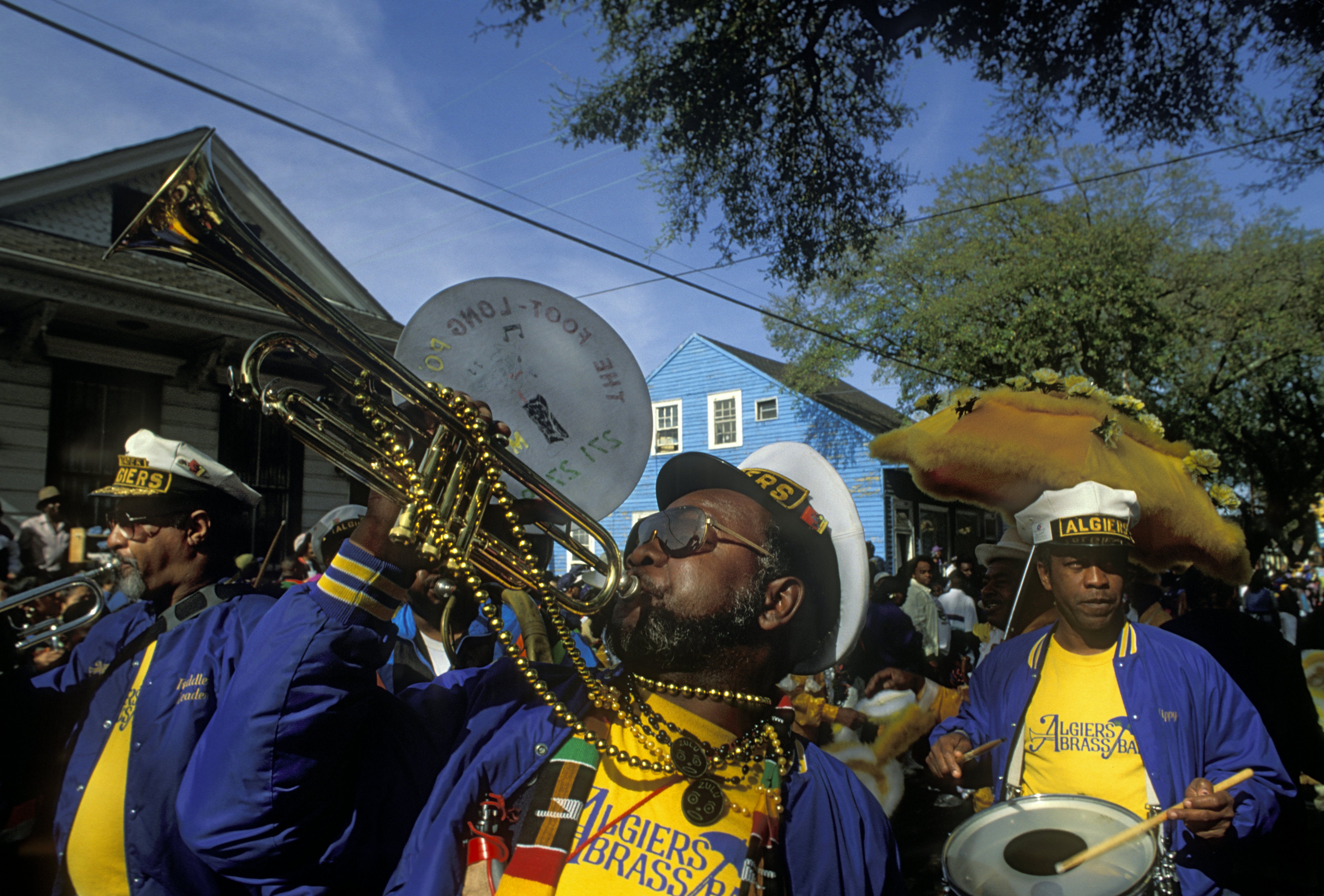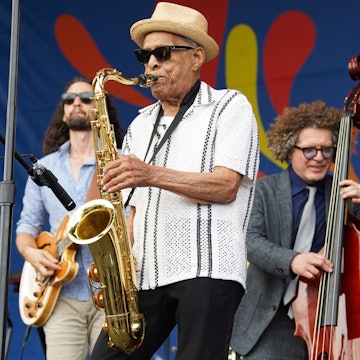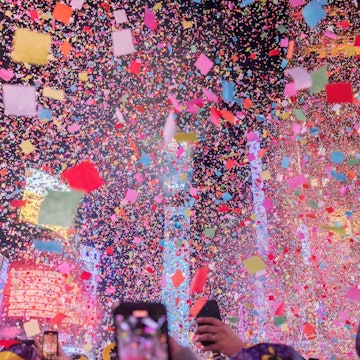
First time Mardi Gras: top tips for New Orleans' biggest party

Feb 14, 2020 • 5 min read

The Mardi Gras Indians have been around since the mid-1880s © Erika Goldring / Getty Images
When that first strand of beads hits you in the head, you know you've arrived at Mardi Gras. Garish floats, masked strangers, marching bands, throngs of revelers invading your space. For newcomers, it’s easy to feel overwhelmed by the madness. But that first string of low-flying beads? Consider it your invitation to join the fun. Our advice? Accept the beads, embrace the chaos and laissez les bon temps rouler.

Saga of a celebration
Springtime hedonism has its roots in early pagan traditions and fertility rites, when uninhibited behavior was followed by a period of civilized forbearance. The Catholic Church institutionalized these rituals, establishing a season of feasting before the start of Lenten fasting on Ash Wednesday. The word carnevale comes from a late Latin expression meaning “farewell to the flesh”, essentially one long goodbye to your dinner. The final day of fun is known as Mardi Gras, or “Fat Tuesday”.
In New Orleans, early generations of Creoles celebrated carnival season with organized masquerade balls. Beyond the walls of these private society dances, masked revelers would continue the party in the streets. Today, this tradition is maintained, with private society balls and public parades filling the pre-Lenten calendar.
The first New Orleans float appeared in 1857 when a group of wealthy and secretive Anglos, calling themselves the Mistick Krewe of Comus, paraded through town on floats lit by flambeaux (torches). In the ensuing years, new parade clubs formed, and they too dubbed themselves “krewes” – an intentional misspelling of “crews”. Today, more than 50 parades wind through New Orleans during carnival season. Floats celebrate a theme chosen by the krewe and spotlight Greek, Roman and Egyptian mythology as well as historic events and modern-day cultural touchstones.
You might also like: 6 places to celebrate Mardi Gras if you can't make it to New Orleans

Pick your krewe
Most krewes share a love of parties, parades and royalty, with kings, queens and other royal courtiers waving to the crowd from spectacular floats. What adds the spark? The unique, sometimes wacky, personalities of the different krewes and their free trinkets, called throws, which are tossed to the crowd.
Established in 1872, Rex is the king of Mardi Gras and his entourage one of the oldest parading krewes in New Orleans. The Krewe of Rex created the gold, purple and green color scheme that is still embraced today. For generations, Rex and other long-established krewes, like Proteus, have existed as secret societies of the city's most powerful men.
The roaming Mardi Gras Indians, organized by the city’s black community, appeared in the mid-1880s. Their elaborate feathered costumes honor Native American traditions. Another black krewe, Zulu, joined the scene in 1909. Iris, established in 1917, is the oldest of the all-women krewes. The all-women Muses held their first parade in 2001. Check out their sparkly throws – including some very elaborate footwear.

The splashy super-krewes – Bacchus, Endymion and Orpheus – formed in the last 50 years. These mammoth party machines are full of glitz, with celebrity guests, marching bands, dozens of floats and more than 1000 riders apiece. Look for their parades the Saturday, Sunday and Monday nights before Fat Tuesday.
“Walking krewes” are grassroots parades with amusingly narrow themes. Don a costume and join these wacky processions! You can bring your four-legged friend to the Barkus parade, celebrate wine with the Krewe of Cork or find the droid of your dreams at the Intergalactic Krewe of Chewbacchus.
Mardi Gras is observed 47 days before Easter, and it can fall on any Tuesday between February 3 and March 9. In 2020, it falls on Tuesday, February 25. Family Gras takes place runs February 14-16. Early parades tend to be low-key, family-friendly affairs; the processions grow increasingly elaborate and raucous as Fat Tuesday approaches. Here are some highlights for 2016. For the full list of parades, routes and schedules, see the official Mardi Gras website.

Top tips for a great Mardi Gras
Pick your procession Parades carouse through New Orleans on different routes. All the parades are fun, but check times and locations so that you don’t miss the ones likeliest to strike your fancy. Zulu and Rex are always a good bet. The parade scene gets rowdier and more crowded as Mardi Gras approaches.
Consider your view What is most important to you during a parade? Proximity to a bathroom? Somewhere to sit? A prime spot for your kid on the sidewalk? Do a little research to avoid disappointment. Some churches will let you use their restrooms for a small fee, and there are seating stands on some routes.
Wear a costume You don’t have to don a mask or costume, but you might appear lame if you don’t. And really, who wants that?
Step on doubloons Your fingers will get smashed if you reach for these popular coin throws when they hit the street. Instead, step on the doubloon to claim it and wait for a chance to pick it up. And remember, locals can get feisty when scrambling for unique throws. Don’t take their efforts personally. As one resident explained, “All is fair when trying to catch something.”
Beware of Bourbon Street Rowdy drunks. Sloshing beer. And naughty flashes of, well, whatever you can imagine. From the final weekend of carnival until Tuesday night, Bourbon Street is a mosh pit of sweaty drunken mayhem – a good or bad thing depending on your persuasion.
Embrace the chaos Don’t stress too much about parade schedules or things going wrong. Carnival is one long party. Surprises and goofs add to the fun and the memories.
More information
If you would like to track the progress of a parade, download the GPS-enhanced Mardi Gras Parade Tracker app from WWL News. Some krewes also have Twitter accounts.
You might also like:
Venice Carnival: make the most of the city's biggest party
Latin American and Caribbean Carnivals for every traveler
Originally published Feb. 2015. Updated Feb. 2020















